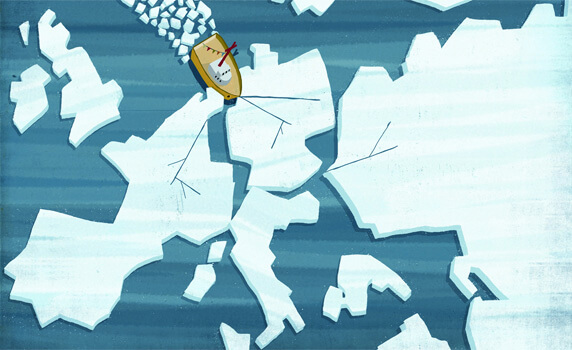Stories
Learning From Entrepreneurial Icebreakers
Julia Prats on turning challenges into opportunity
October 6, 2014

Many economies today are in transition. The uncertainty of everything from funding to political stability presents serious challenges for entrepreneurs – but many of these challenges have been seen before.
Entrepreneurs living in Central and Eastern European countries, particularly during and following Communism, had their work cut out for them. An entrepreneur working in a difficult transition economy today would do well to take cues from these “entrepreneurial icebreakers.”
IESE’s M. Julia Prats, along with Marc Sosna and Sylwia Sysko-Romańczuk, shares the experiences of these business pioneers in the current issue of IESE Insight magazine. Their article, “Learning From the Entrepreneurial Icebreakers,” identifies the characteristics and attitudes that lead determined individuals to succeed against the odds.
This article comes at a timely moment, given that this November marks the 25th anniversary of the fall of the Berlin Wall.
Tacking Entrepreneurship
Perhaps the most significant trait of entrepreneurs operating in transitional contexts is their tendency to “tack.” This term is borrowed from sailing, where sailors wishing to navigate directly into the wind must move in a zigzag pattern, making gains by constantly changing direction and cutting forward a different way each time.
In the case of entrepreneurs, this may mean jumping from one opportunity to another to keep the forward momentum. For instance, a Polish computer salesman moved into construction after a defaulting client bartered construction materials, introducing him to a new line of business. In another noteworthy case, a Czech flower business began making semifinished iron products and ended up as one of the world’s largest hospital bed producers.
Often the harsh realities of transition economies – such as a lack of property rights, limited choices and few guarantees – make changing tack not just practical but essential.
“Changing Tack” also happens to be the theme of IESE’s upcoming Global Alumni Reunion.
Silver Linings Playbook
Every big project has its unforeseen hurdles, but entrepreneurial icebreakers are adept at finding the silver linings. For example, the mass layoffs that often come with instability can allow growing companies to recruit highly qualified people newly released into the labor market.
One Slovenian entrepreneur interested in producing small aircraft ran up against his country’s complete lack of exams and regulations for the industry. Undaunted, he offered to design the institutional and professional frameworks himself.
The general nonexistence of investment capital in Central and Eastern Europe forced entrepreneurial icebreakers to start small and use that base as a springboard to something bigger.
Commitment and determination were, and remain, key characteristics of successful entrepreneurs in tumultuous economies. This may mean starting out with non-functioning tools or equipment, or it may mean restoring an abandoned property only to see it requisitioned by the former owner of a state-owned company. Continuing to believe in the venture and take risks with no immediate payoff is a key attribute to have in such circumstances.
“When the going gets tough, the tough get going,” as the saying goes. Entrepreneurs facing challenging circumstances today need to develop the thick skins of the entrepreneurial icebreakers of the past.
Members of the Alumni Association and subscribers to IESE Insight – a quarterly research-based magazine, published in separate English and Spanish editions – can read this and other premium articles using their membership credentials.
Those who are neither Alumni nor subscribers can access the premium content either by subscribing to the magazine or buying the article.
Access the current issue of IESE Insight here.